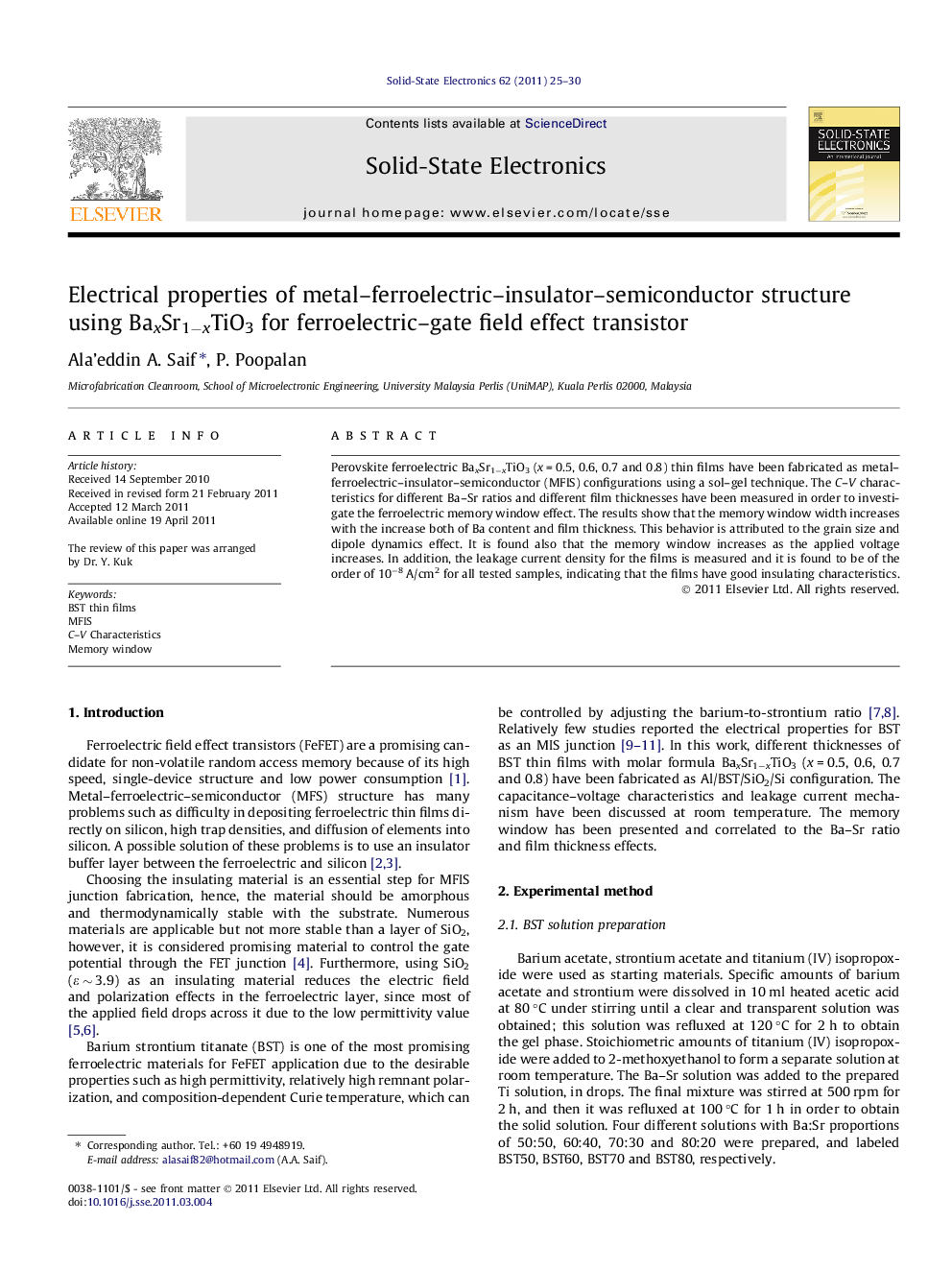| Article ID | Journal | Published Year | Pages | File Type |
|---|---|---|---|---|
| 753057 | Solid-State Electronics | 2011 | 6 Pages |
Perovskite ferroelectric BaxSr1−xTiO3 (x = 0.5, 0.6, 0.7 and 0.8) thin films have been fabricated as metal–ferroelectric–insulator–semiconductor (MFIS) configurations using a sol–gel technique. The C–V characteristics for different Ba–Sr ratios and different film thicknesses have been measured in order to investigate the ferroelectric memory window effect. The results show that the memory window width increases with the increase both of Ba content and film thickness. This behavior is attributed to the grain size and dipole dynamics effect. It is found also that the memory window increases as the applied voltage increases. In addition, the leakage current density for the films is measured and it is found to be of the order of 10−8 A/cm2 for all tested samples, indicating that the films have good insulating characteristics.
► The memory window width increases with the increase both of Ba content and film thickness. ► The memory window increases as the applied voltage increases. ► The low value of the leakage current indicates the good insulating characteristics of the films.
